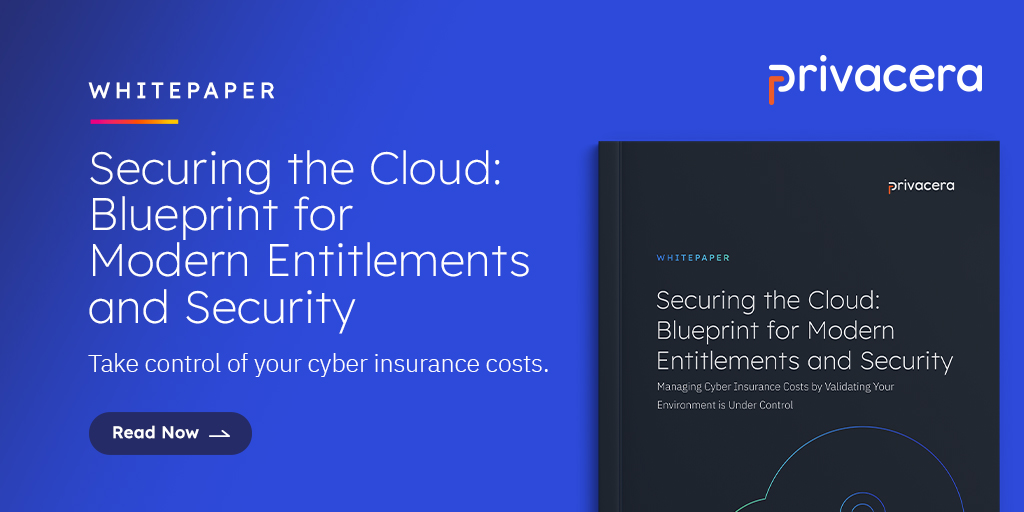In today’s digital age, data security governance is a crucial aspect of any organization’s operations. With data breaches becoming increasingly common and sophisticated, it is important to have robust measures in place to ensure the safety and confidentiality of sensitive data. In this blog post, we will discuss what data security governance is, why it is important, and some best practices for implementing it in your organization.
What is Data Security Governance?
Data security governance refers to the set of policies, procedures, and controls that an organization puts in place to protect its sensitive information from unauthorized access, use, disclosure, or destruction. It involves an end-to-end data security lifecycle starting with identifying the critical data assets of the organization, assessing the risks associated with them, and implementing appropriate measures to mitigate those risks. Data security governance also includes monitoring and auditing to ensure compliance with policies and procedures.
What is the information security life cycle and what is the data protection life cycle? Read on for an outline of the data protection life cycle, including vital security phases and important aspects of data security governance that organizations should consider as they mature their data governance posture:
Executive-Level Understanding and Agreement: Stakeholder buy-in and cross-team alignment is a critical first step in the information security life cycle. Executives must understand what needs to be done, why it’s important, and what type of energy and resources will be necessary to get the program to a functioning, maintainable state. Cornerstone to this understanding and agreement is the definition of the business’s general privacy and security stance, both current and what’s necessary, for example, to maintain compliance and enhance productivity.
Risk Assessment: Before implementing any data security governance policies or procedures, organizations should conduct a thorough risk assessment to identify potential vulnerabilities and threats to their data. This assessment should include an analysis of the potential impact of data breaches on the organization and its customers.
Data Classification: Data classification is the process of categorizing data based on its sensitivity and the level of protection required. Organizations should develop a classification system that identifies the different types of data they handle and the appropriate security measures that need to be in place for each type.
Access Control: Access control refers to the controls put in place to ensure that only authorized personnel can access sensitive data. Organizations should implement a robust access control policy that includes user authentication, authorization, and auditing at a sufficiently granular level.
Data Encryption and Masking: Encryption is the process of converting data into a code that can only be deciphered by authorized users with the appropriate key. Data masking is a way to create a fake, but a realistic version of your organizational data. Organizations should use encryption and masking to protect sensitive data that is being transmitted or stored. Data masking and encryption can be combined with data discovery to automate sensitive data scanning, identification, and application of data encryption or masking.
Data Backup and Recovery: Data backup and recovery are essential components of data security governance. Organizations should implement a backup strategy that includes regular backups and off-site storage. They should also have a recovery plan in place in case of a data loss or breach.
Employee Training: Employees are often the weakest link in data security. Organizations should provide employees with regular data management lifecycle process training, especially on data security best practices and policies, including data security lifecycle management and the data management project life cycle.
Third-Party Security: Organizations should ensure any third-party vendors they work with have adequate data security measures in place. They should also have contracts that require vendors to adhere to the same data security standards as the organization.
Data Security Governance also is about a unified and end-to-end lifecycle for managing privacy and securing of data. The proliferation of data (volume and variety) combined with a piecemeal siloed tools approach for different facets leads to massive security gaps, heavy reliance on scarce IT resources, and an inability to provide a single pane of glass view of your data estate.
Why is Data Security Governance important?
Balancing data security with business agility is something organizations are trying to achieve as they digitally transform. A fun quote about computer security can sum it up well:
“The only system which is truly secure is one which is switched off and unplugged, locked in a titanium lined safe, buried in a concrete bunker, and is surrounded by nerve gas and very highly paid armed guards. Even then, I wouldn’t stake my life on it.” — Gene Spafford
As Gene suggests there is no true north when it comes to security unless you want to make the secure object unusable. And one enterprise’s response to the question of “What is data security lifecycle?” can vary significantly from the next enterprise’s response. Given that data is now becoming critical to the success of a business it is increasingly more important to make that data accessible without increasing the risk to the business. The discipline of Data Security Governance is focused on improving accessibility of data while maintaining or improving security across the data landscape.
Companies today tend to fall into one of 3 buckets:
Velocity: Company A needs answers and fast. They operate under a high trust model where users have access to most data. They have a few data sets that are eyes only but for the most part are willing to risk exposure for the sake of agility.
Security: Company B has been slapped for data handling violations in the past and is concerned with making sure only the needed users have access to the data they need. This follows more of a zero trust model. It can take months for users to get access to data however it’s worth the loss in productivity to protect the business.
Hybrid: Company C has no master plan or defined processes. They allow each business unit to dictate and define whether they want to be more agile or more secure based on the data they are managing.
The fundamental goal of data security governance is to remove the need to choose between security or agility. Instead companies are provided with the ability to secure their data while at the same time making data more accessible and available for users to leverage in creating insights for the business.
Data security governance can offer 4 key outcomes for the business:
Protecting confidential data: An organization’s data may contain confidential and sensitive information, such as financial data, personal information, or intellectual property spread across their entire data estate. Data security governance helps protect this data from unauthorized access, theft, or misuse in a uniform and consistent manner.
Compliance with regulations: Many industries are subject to regulatory compliance mandates, such as data contracts(legal), GDPR/CCPA (Privacy), SOX controls (compliance) and data protection (Security), which require organizations to protect their data. Data security governance helps organizations to comply with these regulations and avoid legal consequences.
Maintaining trust: Data breaches can damage an organization’s reputation and erode customer trust. Effective data security governance can be a last line of defense to help prevent or reduce the impact of data breaches and maintain the trust of stakeholders.
Faster time to insight: Data is growing at accelerated rates and businesses are recognizing that data must be used to provide more accurate insights helping with the decision making process. Learning how to control and secure data while allowing users to access the data they need without slowing down productivity is challenging. This can be accomplished through a combination of homogenized compliance and security enforcement capabilities integrated with democratized data access and sharing capabilities.
How to implement Data Security Governance?
To implement effective data security governance, organizations should follow these steps:
Define data governance policies: Organizations should create policies that outline the standards and expectations for data security. These policies should cover areas such as access control, data classification, encryption, and incident response.
Assign Data Security Roles and Responsibilities: Data security governance is a collaborative effort that requires the involvement of multiple departments and personnel within an organization. Defining roles and responsibilities for data security ensures accountability for ensuring the safety of sensitive data.
Develop an inventory of Data Assets: Organizations should maintain an inventory of their data assets to identify critical data and prioritize data security efforts. This inventory should include the types of data, location, and the individuals or teams responsible for managing the data.
Conduct Regular Risk Assessments: Risk assessments help organizations identify and prioritize risks to their data security. It is a proactive approach to identifying vulnerabilities and mitigating risks, and it should be conducted periodically to account for changes in the threat landscape.
Implement Security Controls: Once risks have been identified, organizations should implement appropriate security controls to address them. This may include access controls, firewalls, encryption, and intrusion detection systems.
Monitor and Maintain Data Security: Organizations should regularly monitor their data security controls and perform maintenance activities such as updating software, patching vulnerabilities, and conducting penetration testing to ensure that the data security program remains effective over time.
What is the difference between Data Security Governance and Data Intelligence?
Data security governance and data intelligence are two distinct concepts related to managing data, and they differ in their focus and goals.
Data security governance refers to the policies, processes, and controls that are put in place to ensure the confidentiality, integrity, and availability of data. Its main focus is on enforcement of controls to protect sensitive data from unauthorized access, disclosure, and misuse. Data security governance is essential to safeguarding organizations’ assets and reputation, complying with regulations, and preventing data breaches.
On the other hand, data intelligence refers to the use of data analytics and other tools to gain insights and make informed decisions. Its main focus is on establishing a knowledge base to describe the data in business understandable terms – usually shown in a data catalog. That understanding of the data opens the door for analysts and data scientists to leverage data to identify patterns, trends, and opportunities that can inform business strategy, improve operational efficiency, and drive innovation. Data intelligence can help organizations gain a competitive advantage by enabling them to make data-driven decisions and optimize their performance.
In summary, while data security governance is focused on protecting data from unauthorized access and misuse, data intelligence is focused on leveraging data to gain insights and make informed decisions. Both are essential aspects of managing data effectively, and organizations need to have a robust data security governance framework in place to ensure the confidentiality, integrity, and availability of their data while using data intelligence tools to gain insights and drive business value.
Conclusion
Data security governance is an essential aspect of any organization’s operations. By implementing robust policies, procedures, and controls, an organization can reduce the risk of data breaches and protect its critical data assets. However, data security governance is not a one-time exercise, but an ongoing process that requires regular monitoring, assessment, and improvement. By following best practices, an organization can ensure that its data remains secure and protected. For more best practices, read our whitepaper on transforming, automating, and aligning data security governance with the business: download here.





